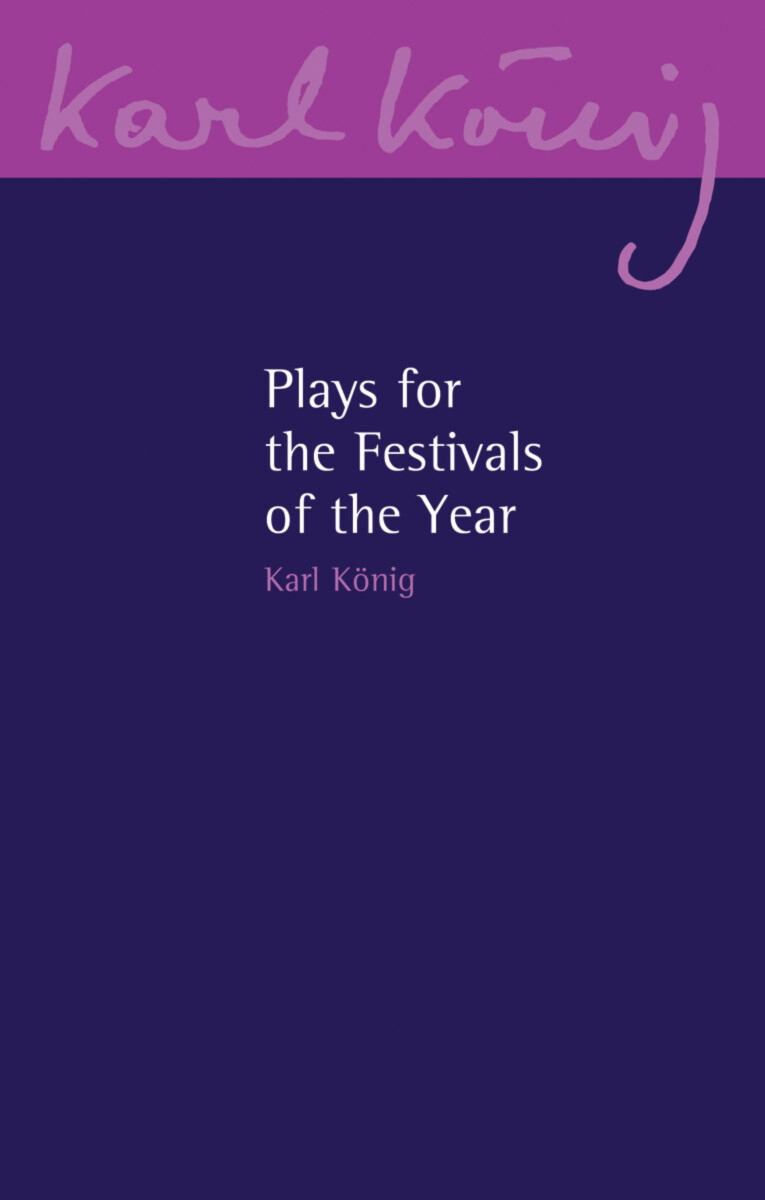Translated by Tascha Babbitch
Preface by Richard Steel
Contributions by Richard Steel
Series edited by Richard Steel
- Publisher
Floris Books - Published
30th July 2017 - ISBN 9781782503743
- Language English
- Pages 470 pp.
- Size 5.4" x 8.5"
Karl König's plays for the festivals of the year are arguably his most original creations. Written to be performed in Camphill communities, they show a deep understanding of the Christian festivals.
With one exception, all fourteen plays were written during the early years of the Camphill movement, and König's hope was that their performance would help bring communities together. Not only is their content entertaining and informative, but the act of performing provides great benefits as social therapy.
Since then, the plays have been translated into many languages and performed in Camphill and other communities around the world.
This is the first time that the original texts of all the plays have been published together. They are presented with an introduction and commentary by series editor Richard Steel, alongside fascinating performance photographs.
“At last, we have all of Dr. König's Festival Plays in one book! It's taken a long time. So, we owe Richard Steele, the Karl König Archive and Floris Books a huge debt of gratitude.... What a treasure trove of wonders this book is! Each play is set out clearly with all relevant information on what the cast should wear, where they should stand (there was not a lot of movement in the plays: they were more like tableaux of the imagination from a higher dimension) and the meager props necessary.... How many people have found their way into Camphill through these plays? As Ruth von Ledebur, who wrote an introduction for the book about König's plays in the context of European drama, says: ‘His plays were—and still are—the most important entry gate for me to his way of thinking and to the spirit of Camphill.’ Richard Steele continues that thought by hoping his book will contribute towards opening gateways for many more people and ‘strengthen the flow of the spirit for which König wanted Camphill to be a vessel.’ We can only be grateful to, at last, have such an invaluable Fountain of Life to nourish and heal us.”
—Russell Pooler, author of A Rosicrucian Soul: The Life Journey of Paul Marshall Allen (Lindisfarne Books)
“... for those readers who don't have the possibility to participate in a production of one of these plays, [reading them] can still be a source of nourishment and inspiration. Read them as if they are poetry. Allow each image to resonate in the soul. Connections will be made over time and deeper meanings will be revealed in a quiet pondering of the heart.”
—Anna Phillips, New View
C O N T E N T S:
- A play for Advent
- Three plays for Christmas
- A four-part Easter play: Maundy Thursday; Good Friday; Holy Saturday; Easter Sunday
- Four plays between Ascension and Pentecost: The Evening in Emmaus; Quo vadis, Domine; The Book of Kells; The Cup of Zarathustra
- A St John's play
- A Michaelmas play
Karl König
Dr. Karl König (1902–1966) born on September 25th 1902 in Vienna, Austria, the only son of a Jewish family who owned a shoe shop. He studied zoology, biology, and medicine at the University of Vienna, graduating in 1927. During his studies on embryology, König encountered the works of Rudolf Steiner through Goethe's scientific writings. He immediately identified with Steiner and was soon acquainted with a number of his followers, including Ita Wegman.
Upon graduation, König was offered several high-profile positions in Vienna, but instead accepted an invitation from Ita Wegman to join her clinic in Arlesheim, Switzerland.
König's time at the Clinic would shape the Camphill movement. It was here that he met his wife and co-founder, Tilla Maasberg, and it was here that he first witnessed the Advent Garden. During this festival, during which children with learning disabilities circle a spiral of moss, lighting a candle from a large central beacon, he promised to dedicate his life “to the care and education of these children.”
Following his time at Arlesheim, König moved to Germany and was involved in founding the Pilgramshain Institute—one of the early curative educational (therapeutic) centers based on anthroposophy. However, due to the political pressure of the Nazi regime, König was forced to leave Germany in 1936. He returned to Vienna, where he operated a successful medical practice and led anthroposophic study groups until 1938.
Fleeing Austria after Nazi annexation in 1938, König became part of a small group of doctors, teachers, and artists to be granted political asylum in the United Kingdom in 1939. König moved to Aberdeenshire, Scotland, where this group founded a home for children with learning disabilities, which became the beginning of the Camphill movement. After World War II, more schools were established, as well as curative education villages for adults with disabilities, based on the ideal of working together as a community.
In the following decades, König's Aberdeenshire community grew and expanded into Britain, Europe, and North America, becoming the Camphill movement we know today. During this period, König worked tirelessly to help children and adults with special needs through publications, talks, and seminars—as well as by establishing communities around the world.
Karl König returned to Germany in 1964 and began yet another community, this one near Überlingen, on Lake Constance (Bodensee), where he died in 1966.


